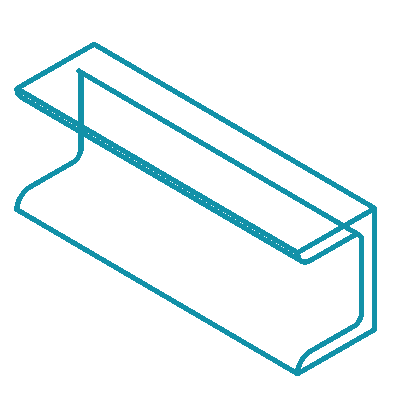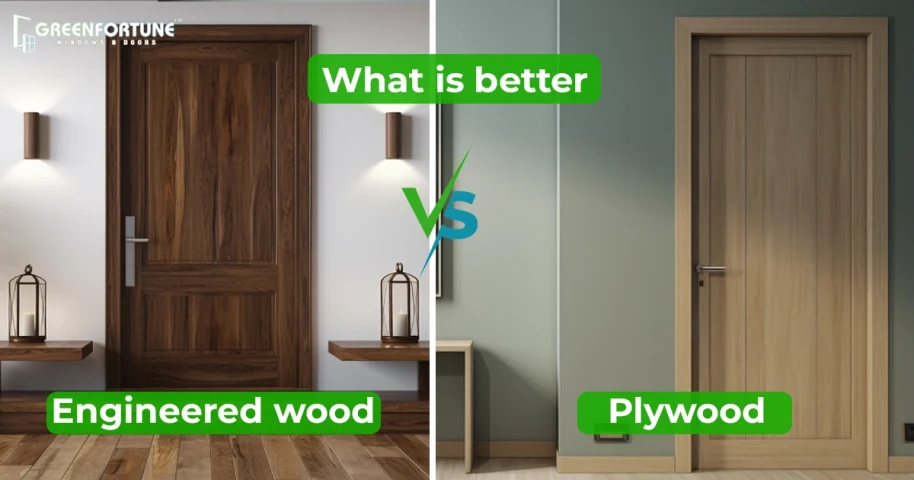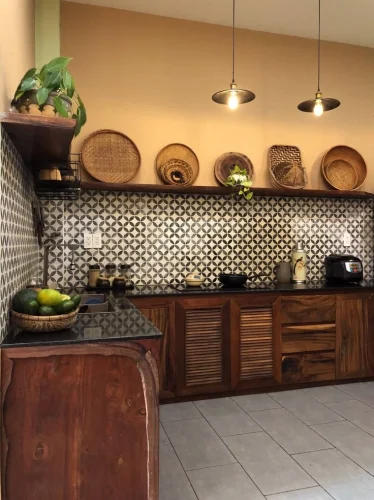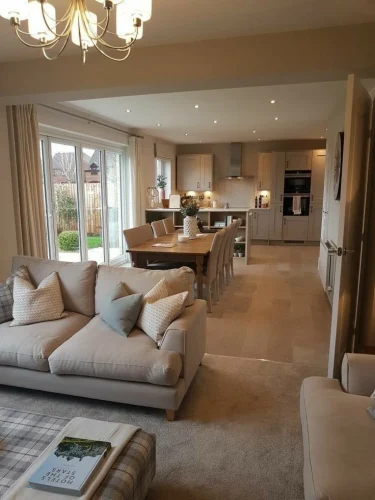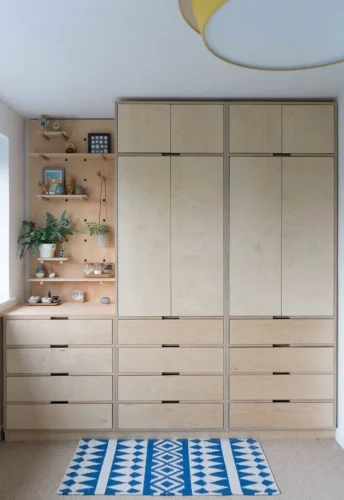
What is Builder Floor? How is it Different from Traditional Apartments?
April 3, 2025
8 Common Myths About Heat Proof Glass (And The Facts Behind Them)
April 3, 2025Are you planning on renovating your home or thinking of buying new furniture? However, the choice of materials can significantly impact both the aesthetics and functionality of your house. Engineered wood and Plywood are among the most popular options for cabinets, furniture, and floorings.
While both offer versatility and affordability, they differ in composition, performance, and application. So, understanding the differences between plywood vs engineered wood is crucial for making an informed decision.
Table of contents
What is Engineered Wood?
Source: Pinterest
Engineered wood, or composite wood, is made by gluing together small pieces of wood, like wood bits, fibers, or thin sheets. Think of it like a wood mix and MDF, particleboard, and hardboard are all types of engineered wood.
Difference Between Plywood vs Engineered Wood
Here’s the elaborative difference between Plywood vs Engineered wood:
Properties | Plywood | Engineered Wood |
Durability | Plywood is usually a tougher material especially when it comes in contact with moisture. | Engineered wood is not that durable especially when comes in contact with moisture. It can get puffy or fall apart if it gets wet. |
Cost | Due to the higher quality, the cost of plywood is higher. | Engineered wood is often more affordable than plywood. |
Appearance | Plywood can showcase the natural wood grain, offering a classic and versatile aesthetic. | Engineered wood, especially MDF, has a smooth, uniform surface that is ideal for painting or laminating. |
Maintenance | Plywood requires minimal maintenance and can be cleaned with a damp cloth. | Engineered wood, particularly those with laminated surfaces, is also easy to clean. |
Pros and Cons of Plywood vs Engineered Wood
Here are the pros and cons of Plywood vs Engineered Wood:
Plywood | Pros | Cons |
High strength and durability | Generally more expensive | |
Excellent resistance to warping and cracking | Have visible knots or imperfections | |
Good moisture resistance | ||
Natural wood grain appearance | ||
Engineered Wood | More affordable | Lower durability, especially in moist environments |
Smooth, uniform surface ideal for painting or laminating | Susceptible to moisture damage | |
Can be made from recycled wood | May release formaldehyde (in some types) |
Best Uses: Plywood vs Engineered Wood
Plywood | Engineered Wood |
Structural applications | Interior furniture (cabinets, shelves, tables) |
Cabinetry and furniture in high-moisture areas (kitchens, bathrooms) | Laminated flooring |
Outdoor furniture | Decorative panels |
Marine applications | Ready-to-assemble furniture |
How to Choose the Right Material: Plywood vs Engineered Wood
Source: Pinterest
By carefully considering these factors, you can choose the material that best suits your needs and create a beautiful and functional home.
- Budget: Engineered wood is generally more affordable, while plywood offers better long-term durability.
- Moisture Exposure: If your project involves high-moisture areas, plywood is the better choice.
- Aesthetic Preferences: Plywood offers a natural wood grain, while engineered wood provides a smooth, uniform surface.
- Durability: For structural applications or heavy-duty furniture, plywood is recommended.
- Maintenance: Both materials are relatively easy to maintain, but plywood is more forgiving in moist environments.
- Certifications: When purchasing engineered wood, check for low-formaldehyde certifications.
Also Read: What is engineering wood? its types, benefits and disadvantages
Conclusion
Plywood vs engineered wood, the choice is yours. Engineered wood is more cost-effective and versatile for interior projects, but plywood is superior for structural and high-moisture applications because of its superior durability and moisture resistance. Before making any decision, carefully evaluate the advantages and disadvantages of both the material, for enhancing the beauty and functionality of your house.
Also Read: 6 Best Types of Wood for Windows In India
Green Fortune Doors & Windows
We at Green Fortune reinvent the look and feel of your homes. We offer high-quality windows and doors that prioritize energy efficiency while simultaneously improving the aesthetic appeal of the home. At Green Fortune, we make sure that each installation creates a cozy, and safe home.
Also Read: How to Get Rid of Termites at Home?
Frequently Asked Questions (FAQs)
Q1: Which is an affordable option, plywood or engineered wood?
A: Plywood is more expensive than engineered wood. The engineered wood could be the best choice if you have a small budget, but plywood is renowned for providing superior long-term durability, which may save you money on replacements in the future.
Q2: Where should I use plywood?
A: You can use plywood in areas with moisture or where strength is crucial, like kitchen cabinets, bathroom vanities, or structural elements. But you can also use it for interior furniture like bookshelves, cupboards, and where moisture isn't a concern.
Q3: What is better for kitchen cabinets, plywood, or engineered wood?
A: A plywood's ability to withstand moisture makes it a popular choice for kitchen cabinets. Compared to engineered wood like MDF or particleboard, plywood can withstand spills and humidity better in kitchens.


